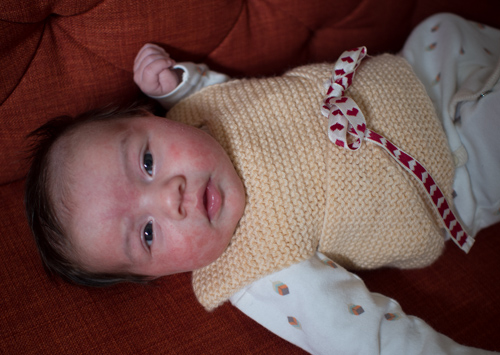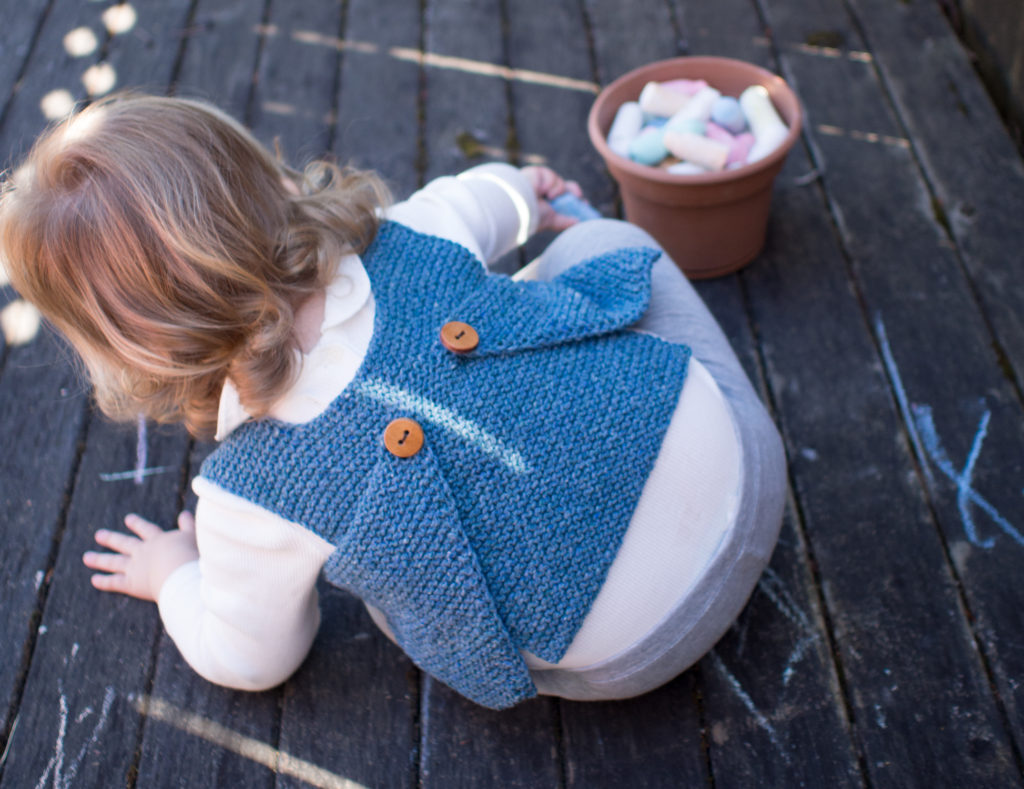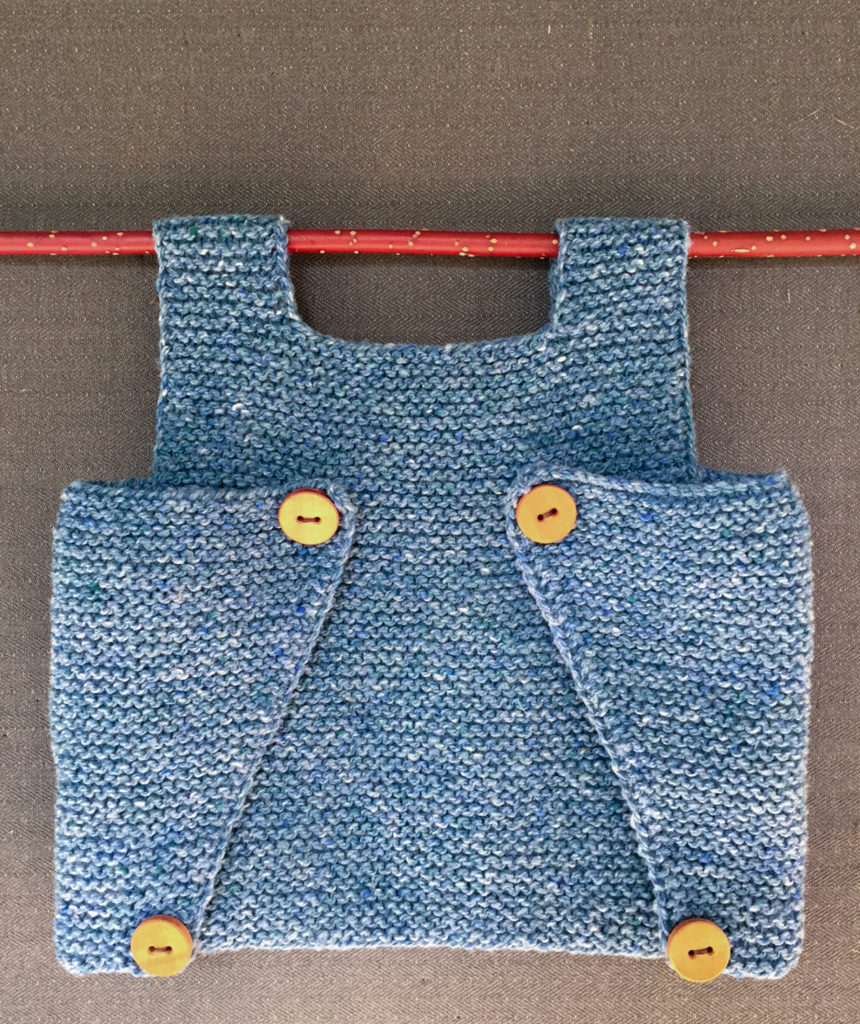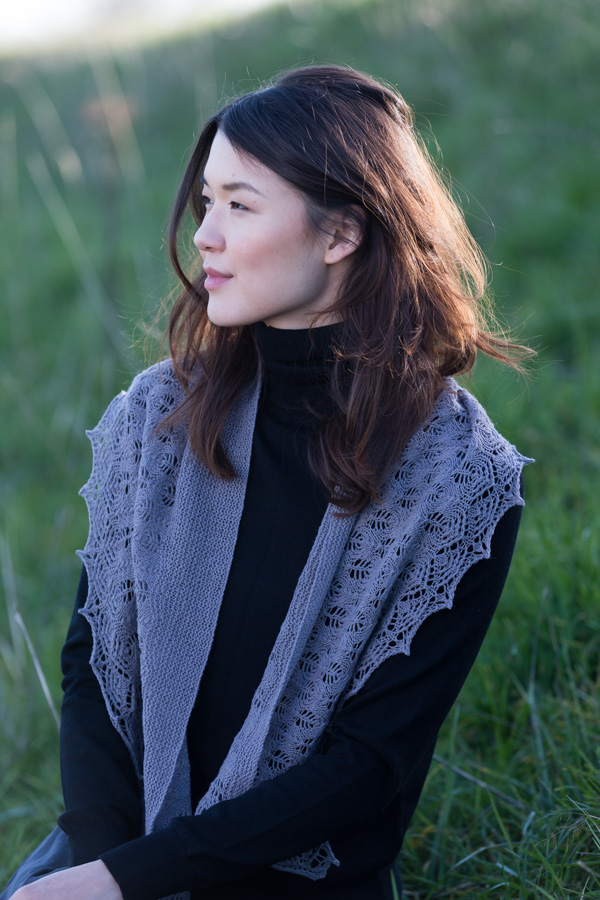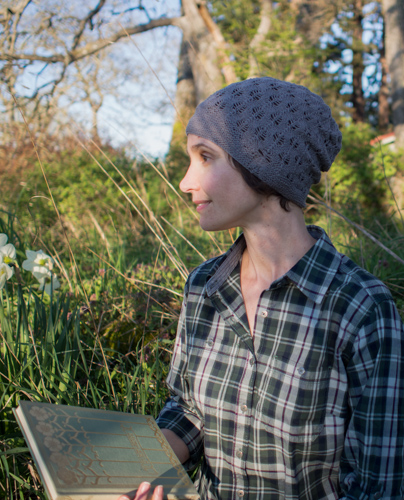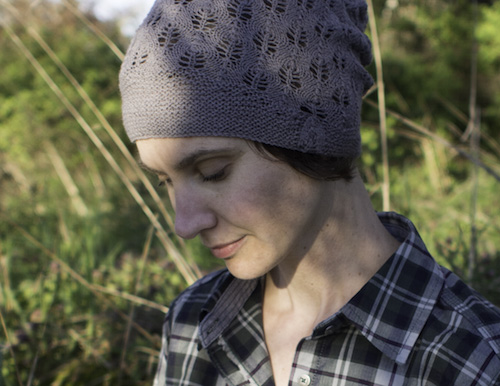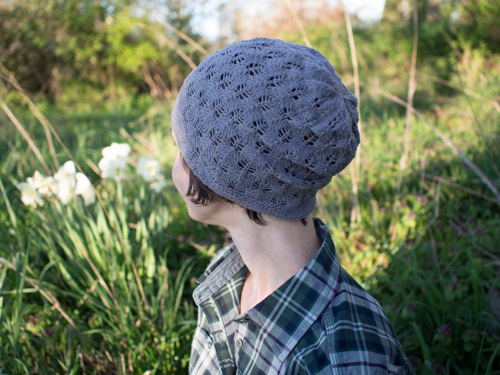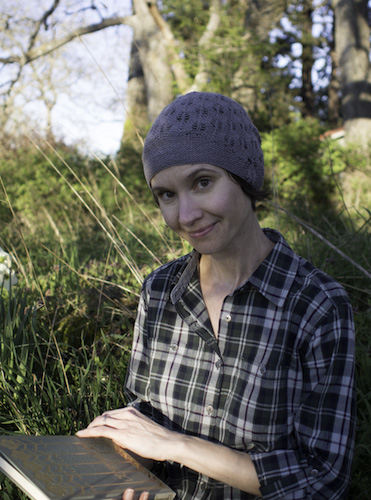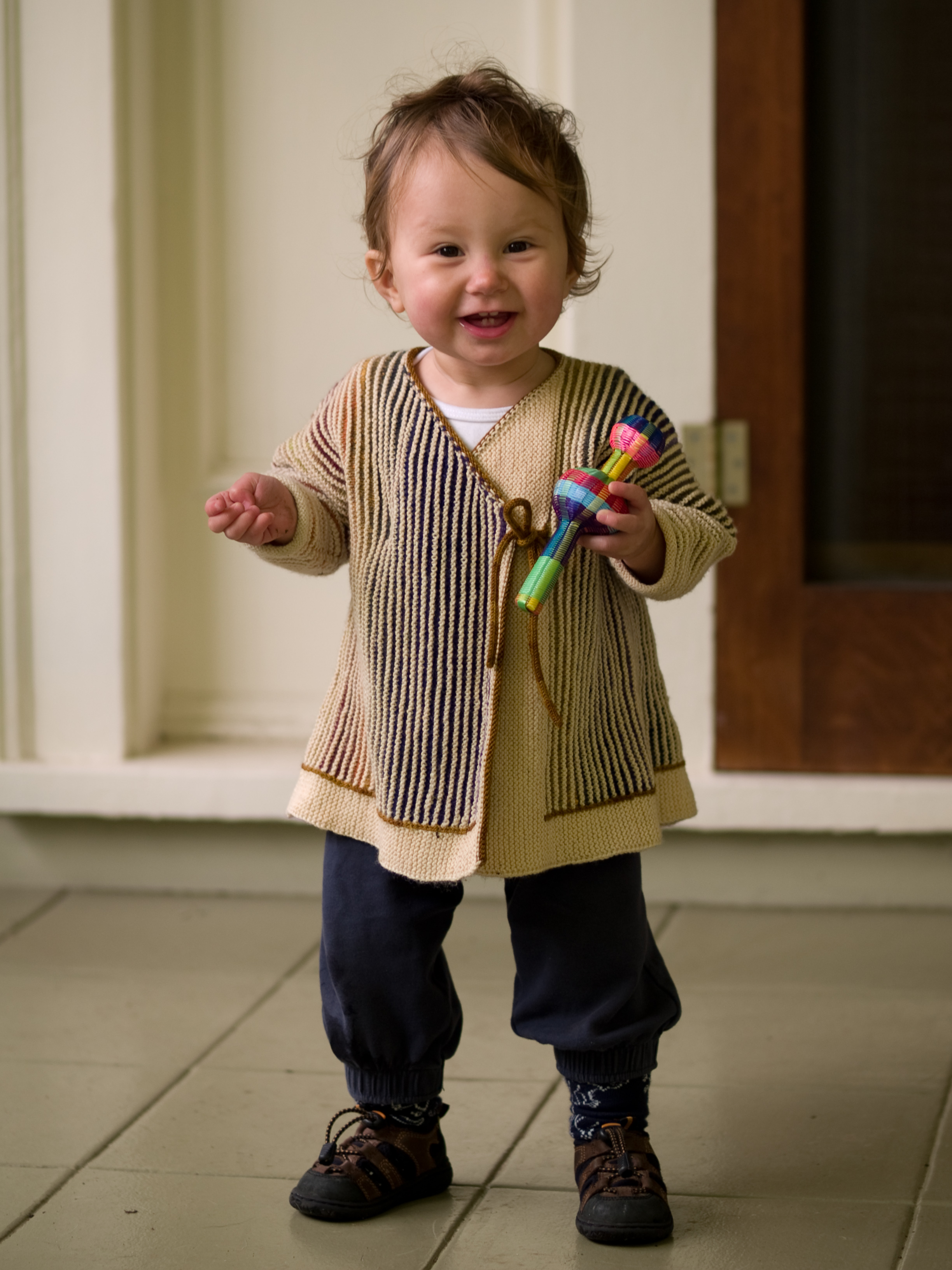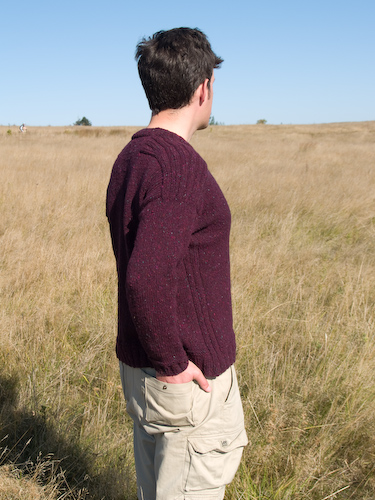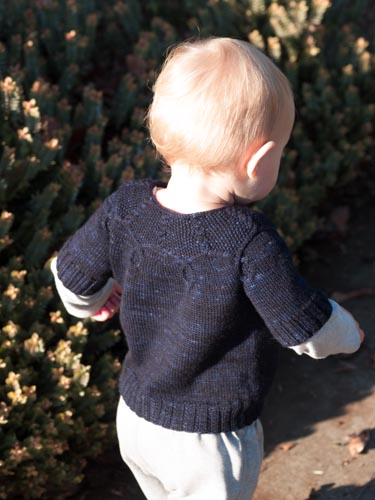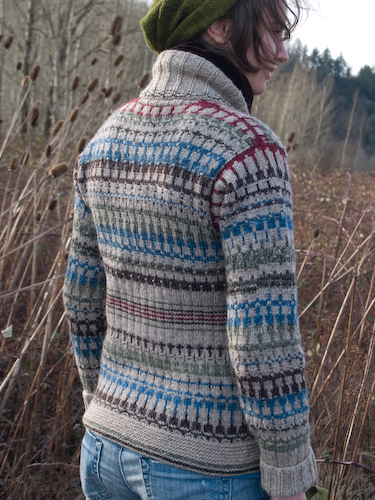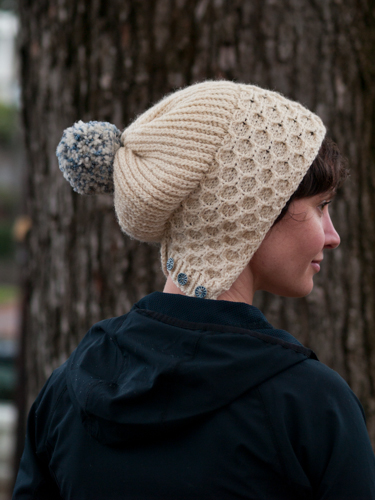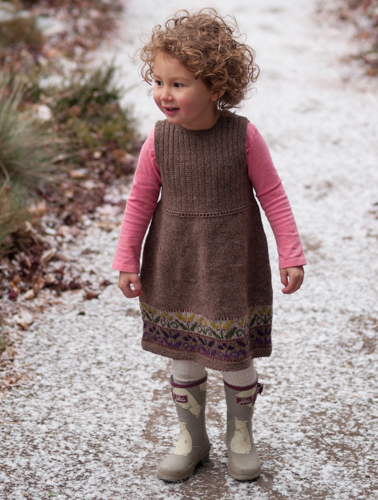Winter Solstice seems like an auspicious day to publish a new pattern—for the shortest of humans on this shortest of days—and to reemerge from blog hibernation, no?
After much tinkering with the geometry, test knitting in all sizes, and a little more tinkering and a whole lot of life getting in the way, the Littlewing vest is now available for purchase! Sized for babies newborn to two years old, this vest uses 150-250 yards of DK-weight wool. I’ve used two yarns from Green Mountain Spinnery—the blue shown above is Mewesic and I did a newborn size for a friend’s baby in New Mexico Organic—and loved the results. But I also did a prototype in YOTH Big Sister…
And Martha, mama to this little peach, knit one for her nephew in Brooklyn Tweed Arbor, so really, the options are wide open. If you’ve got worsted weight in your stash that you’d like to substitute, you could probably just knit the next smaller size and come out fine.
My favorite feature of Littlewing is that it’s reversible. For wee ones who can’t sit up or move around much, the front fastening is the easiest way to put it on: just lay the vest out flat, place baby on the back portion, flip the front over her head, and wrap the wings in to button or tie closed. But for inquisitive and coordinated specimens who can’t see a button without wanting to taste it, just flip the vest around and you’ll stymie them completely.
One change I made after the test knitting phase was to add an optional second set of buttons to secure the lower hem. I recommend this modification for the larger sizes. The four-button vest comes out like this:
Littlewing is available for purchase in my Ravelry store. I hope you’ll love this little wardrobe staple for the small folks in your life; I can’t wait to see some out in the wild. (And now, off to cast on two more, because the tiny cousins are landing thick and fast! The good news is that these will be my sixth and seventh iterations, and I’m not sick of knitting this pattern yet. They’re like eating potato chips.)

